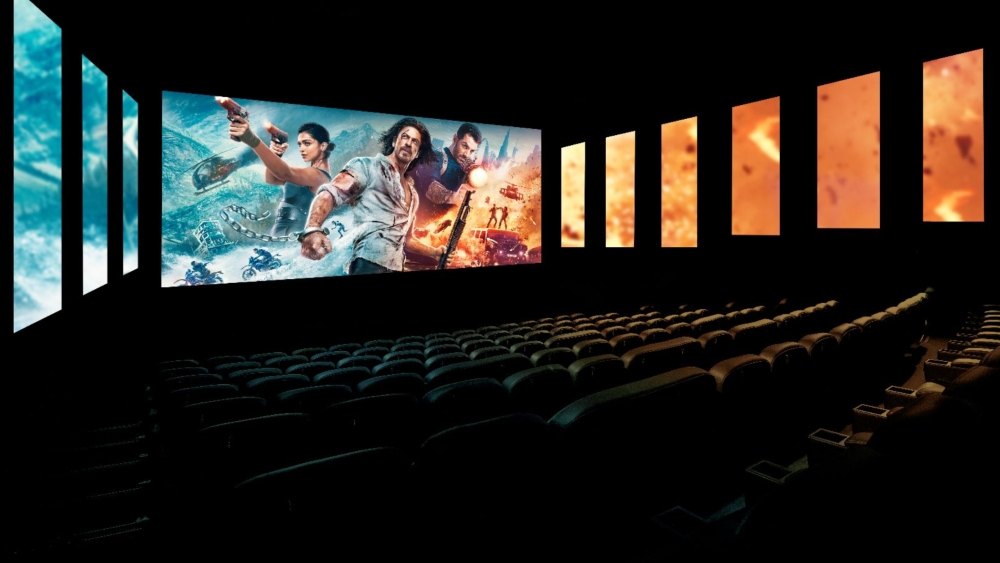CGR Cinemas Looks to Democratize Premium Format at Home and Abroad
CGR Cinemas, France’s second largest exhibitor, has built a reputation on technological innovation, leading the charge in the local market as the first multiplex chain to digitize every one of its screens back in 2007. Since then, the privately held company has become a vocal and energetic evangelist for the premium format, touting its proprietary Immersive Cinema Experience (ICE) model both at home and in a growing number of territories abroad.
“No matter the case, the future of filmgoing is tied to the Premium Large Format (PLF),” says CGR managing director Jocelyn Bouyssy. “The more that people go to the movies, the more they’ll end up discovering PLF rooms, and the more they’ll want to come back. That’s my philosophy.”
When Bouyssy launched CGR’s initial modernization campaign, he did so with the 2009 release of “Avatar” in mind, lending a degree of poetic symmetry to the record-setting premium admissions pulled in by last year’s sequel, “Avatar: The Way of Water.”
Between the two films, CGR Cinemas developed, implemented and began exporting its ICE model – an in-house design that outfits a row of LED panels on both sides of an auditorium and fills them with bespoke visuals extending the action onscreen (“It’s like surround sound but for light,” is how an ICE exec describes it).
For ICE Theaters – CGR Cinema’s export arm – the two year lead up to Cameron’s sci-fi sequel coincided with a period of intense international growth, as the La Rochelle-based chain forged partnerships with exhibitors across the globe to open ICE-formatted theaters in North America, the Middle East, Europe and Asia.
While strengthening ties with all the U.S. majors – creating LED visual embellishments for roughly 30 big studio releases each year, with upcoming blockbusters like “Fast X,” “Transformers: Rise of the Beasts,” and “Indiana Jones and the Dial of Destiny” all set to receive the ICE treatment – CGR has also kept the consumer in mind for the 72 premium theaters the chain runs in France.
“Our job is to democratize the premium format without exaggerating the price,” says Bouyssy. “Because screen quality alone is like competing laundry detergents: You can only get the sheets so white. So [for us] it doesn’t make sense to charge $28 a ticket because we want to make this format accessible.”

‘Avatar: The Way of Water’ broke admissions records for ICE Theaters in France
Courtesy of 20th Century Studios
Today, the CGR director divides his tasks, expanding ICE Theaters’ global footprint on one front while consolidating and improving the company’s domestic holdings on another.
Towards those international goals, ICE Theaters will build on a partnership with India’s PVR Cinemas, with plans to open seven premium venues in Mumbai, Delhi and Chennai by this December. The French chain has also built an annex to its La Rochelle post-production bunker in order to format 20 Bollywood productions each year, and is open to building a third wing in order to treat blockbuster productions from other major film territories.
On the domestic side, Bouyssy hopes to not only expand the ICE footprint, but to (eventually) refurbish and rethink every one of his chain’s 700 screens – to ever so gradually bridge the gap between his chain’s premium and more traditional holdings.
“We have to renew, to reinvest, and to advance,” says Bouyssy. “Twenty years ago, we built 600 seats theaters. Today, you don’t hit those numbers but for three times a year, even on Saturday nights. [Instead] I want to reduce that number to 480 seats and to emphasize comfort. That doesn’t mean the remainder won’t return; we’ll get them back with the comfort we offer.”
For now, those plans are on hold until an impeding CGR Cinemas sale goes through. But as he waits to see if CGR should pass from the hands of its historic owners to one of two potential bidders, Bouyssy remains unfazed. “From the moment one of the two is chosen, I will be ‘sold’ alongside all of my team,” the managing director explains. “The new owners will have to agree with my vision, and my plan for the next five to 10 years, otherwise they wouldn’t take me.”
“We need to invest, to reinvest, and to raise the bar for traditional theaters,” Bouyssy continues. “That’s the future [and] that’s what we’ve learned over the past few years. People have an appetite for quality. And in order to get them out of their homes, you have to give them a good product – a good film in a quality theater. Once you’ve solved that equation, you’ve won.”

